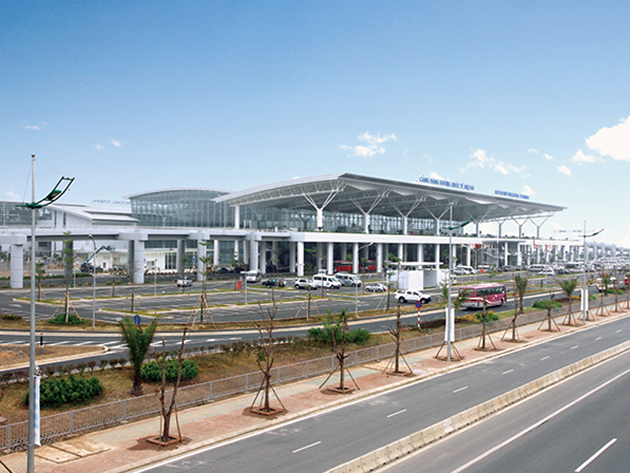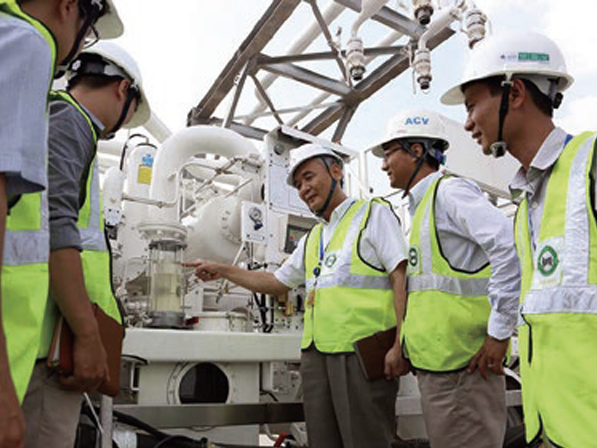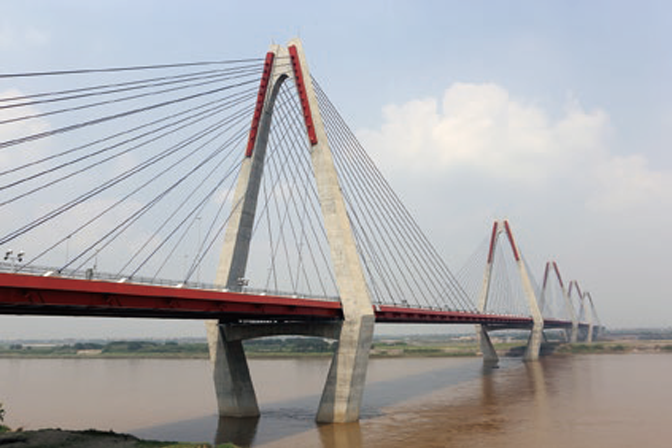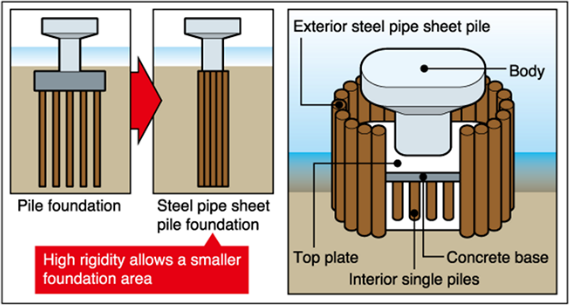In 2016 Japan and Viet Nam mark 43 years since the establishment of bilateral diplomatic ties. Japan resumed its Overseas Development Assistance (ODA) to Viet Nam in November 1992, ahead of other countries. Ever since 1995 Japan has consistently been Viet Nam’s leading donor; in 2014 the value of its ODA totaled over JPY 100 billion (USD 950 million).
Part of Japan’s assistance has been for the development of transportation infrastructure, such as roads, railways, and airports. Viet Nam’s economy continues to develop, with its average growth rate for the past 10 years at 6.75%. This rapid economic growth has brought about a pressing need to respond to the demand for greater capacity in the transportation system. In particular, increasing the capacity of Noi Bai International Airport, which is located in Hanoi, the country’s capital, and is a major hub for international travelers, has been an urgent issue. Japan provided assistance for construction of the new No. 2 Terminal Building, which was completed in December 2014 after a construction period of three years. The airport can now handle 17 million travelers a year, 80% more than in 2010, before construction of the new terminal.
The No. 2 Terminal Building at Hanoi’s Noi Bai International Airport. The airport’s expansion is expected to contribute to Viet Nam’s development both as a tourist destination and as a logistics hub.
In addition to expansion of the airport’s physical facilities, Japan’s assistance—conducted as a joint endeavor by the government and private sector—has included the provision of know-how for the “soft” side of airport operations. For example, advice on airport services led to an improved mind-set among those dealing directly with passengers. Other improvements included adoption of the latest security systems and methods of handling carry-on luggage, along with reorganization of the ticket sales area, where both international and domestic tickets had been mixed in together. Thanks to these measures the airport’s counters are no longer congested.
Improvements to airport access proceeded at the same time as expansion of the airport facilities. The Nhat Tan Bridge, which was completed in January 2015 with ODA from Japan, functions as a vital link in airport access. The bridge has now become a landmark in Hanoi. A construction method developed in Japan was used for the bridge foundations. Steel pipe sheet piles were driven in a cylindrical well shape to create the foundations for the pylons that support the bridge. This method suits soft ground such as that in Viet Nam and makes the bridge more resistant to earthquakes.
The traffic situation in Hanoi changed greatly with the completion of additional transportation infrastructure and the airport expansion. Access to the city center now only takes about 30 minutes compared to more than one hour previously. The connecting road with four lanes in each direction means there is no worry of delay due to traffic jams or accidents. And those driving between the city and the airport no longer need to cross over old bridges in need of repair. The opening of the Nhat Tan Bridge has made travel both safer and more comfortable.
Under its 10-year Socio-Economic Development Strategy, Vietnam’s goal is to become an industrial nation by 2020. At the Japan—Viet Nam Summit Meeting held in Japan this May, five areas were mentioned in regard to cooperation expected from Japan. These included infrastructure development, climate change, and improvement of the investment environment. On this occasion, Japan expressed its support for undertakings including the Ho Chi Minh City Urban Railway Project Line 1 and development of the Ben Thanh underground shopping mall.
Construction of No. 2 Terminal Building. The total construction cost was JPY 76.1 billion (USD 725 million), of which 78% was met with ODA loans.
Beautifully designed pylons support the Nhat Tan Bridge, which has a total length of 3,755 meters (4,100 yards). The total construction cost was JPY 75 billion (USD 714 million), of which 72% was met with ODA loans. The structure, also known as the Viet Nam—Japan Friendship Bridge, is a symbol of the warm ties between the two nations.


































































































































